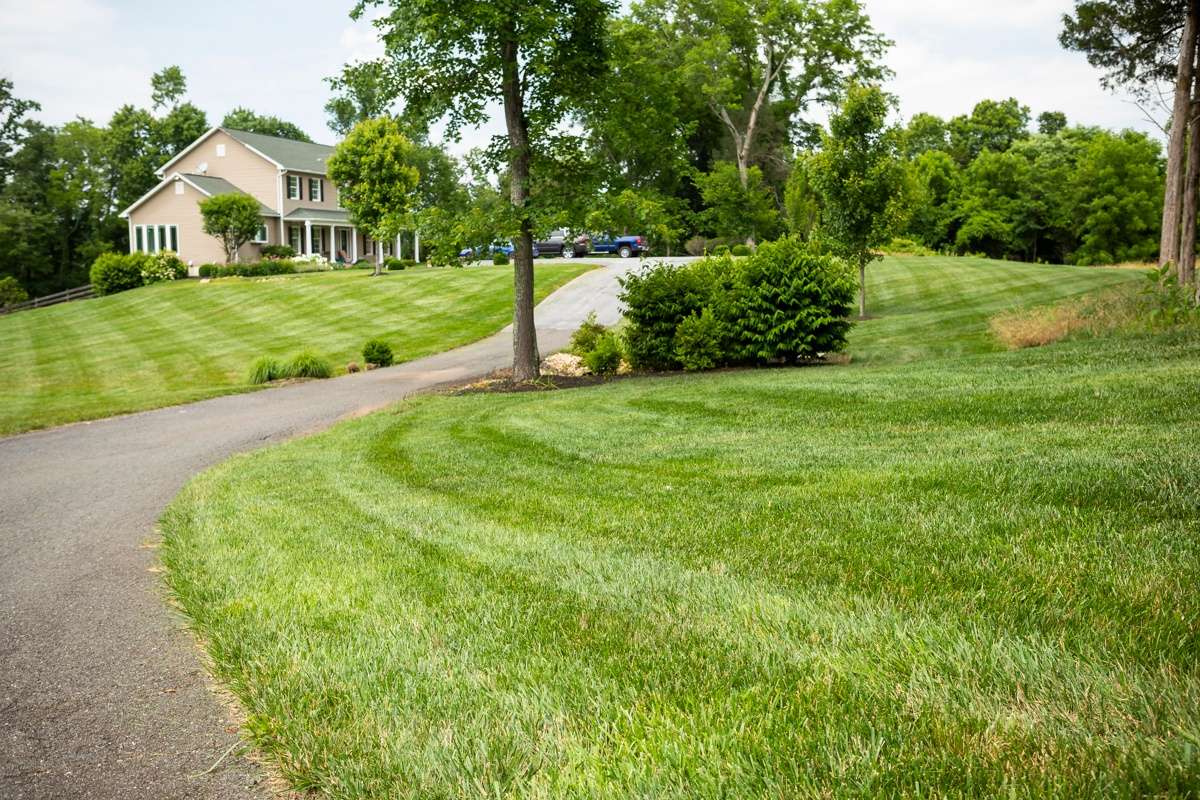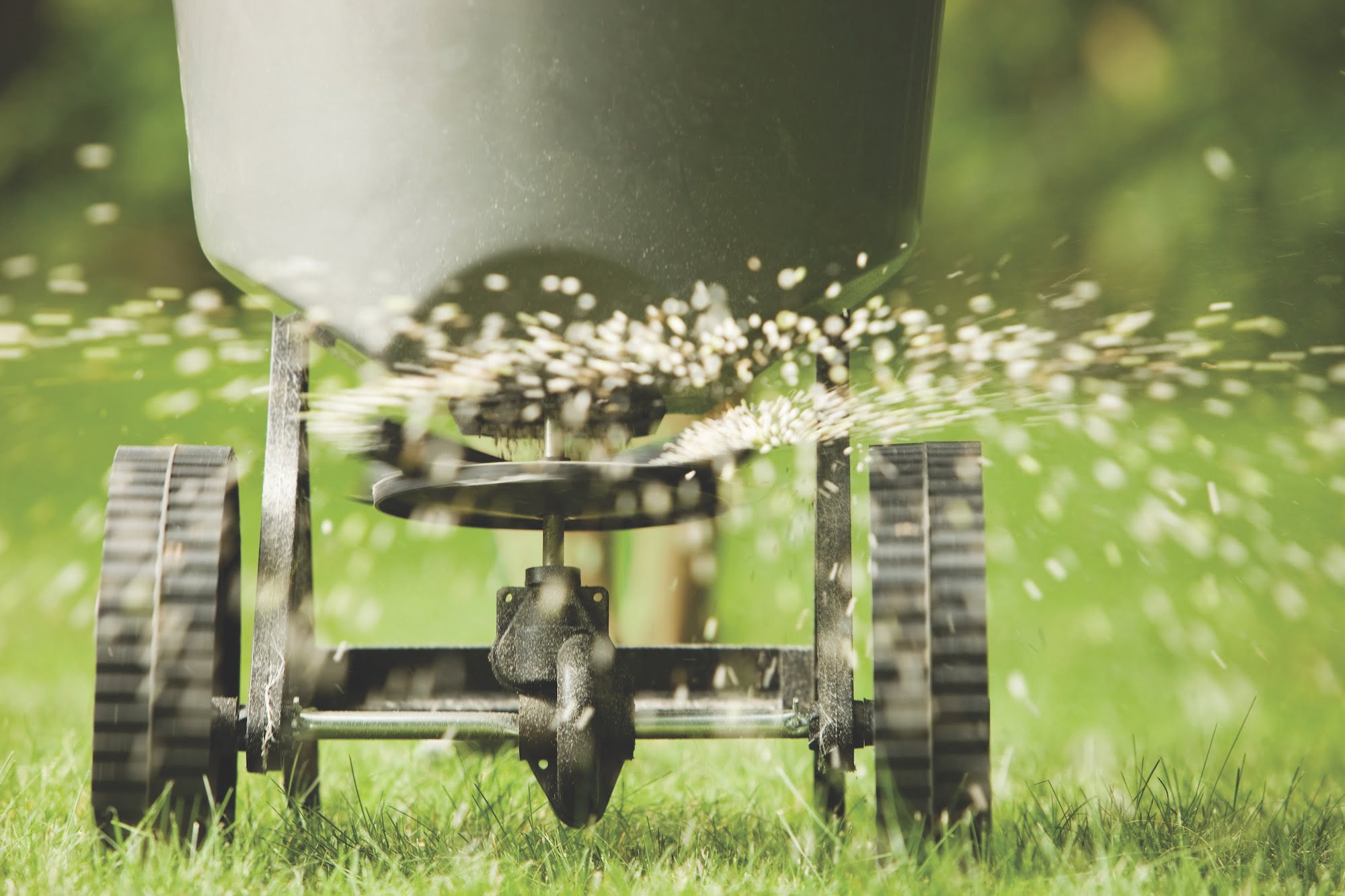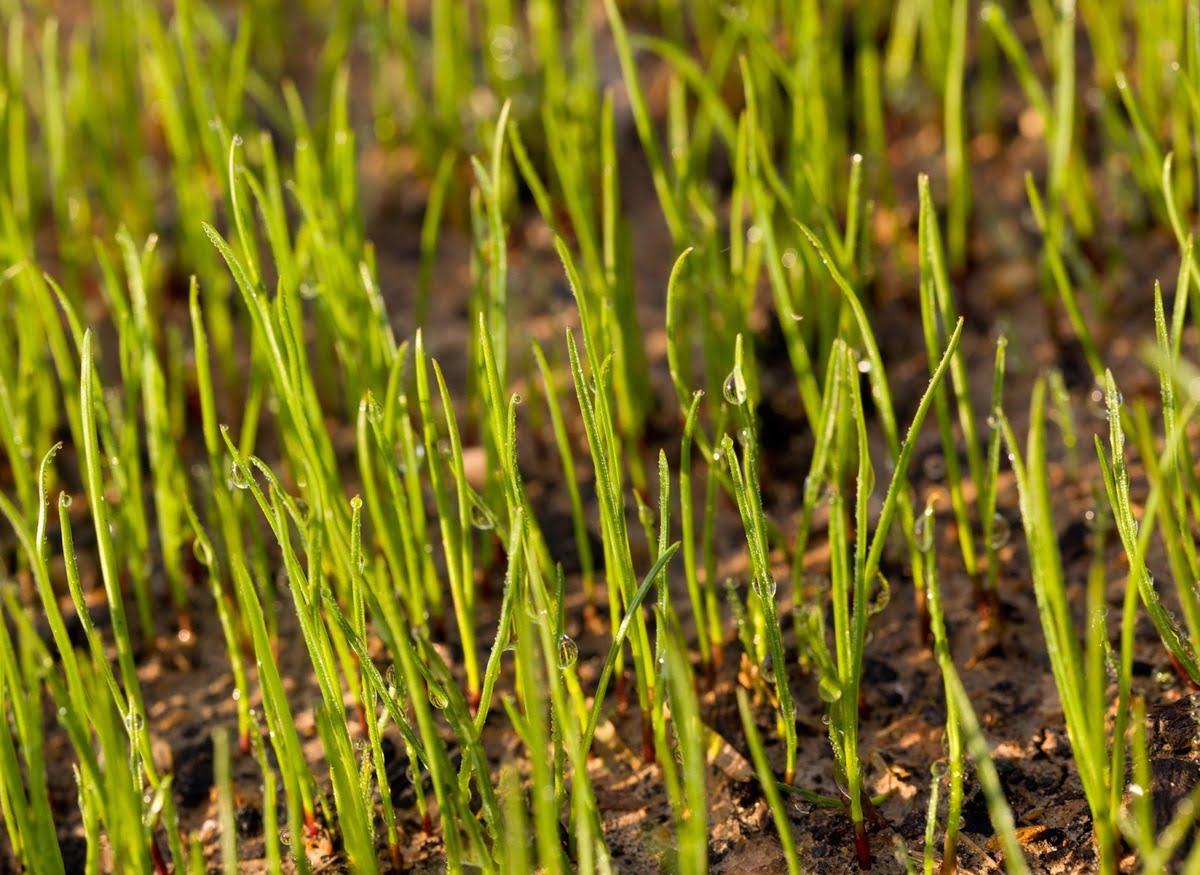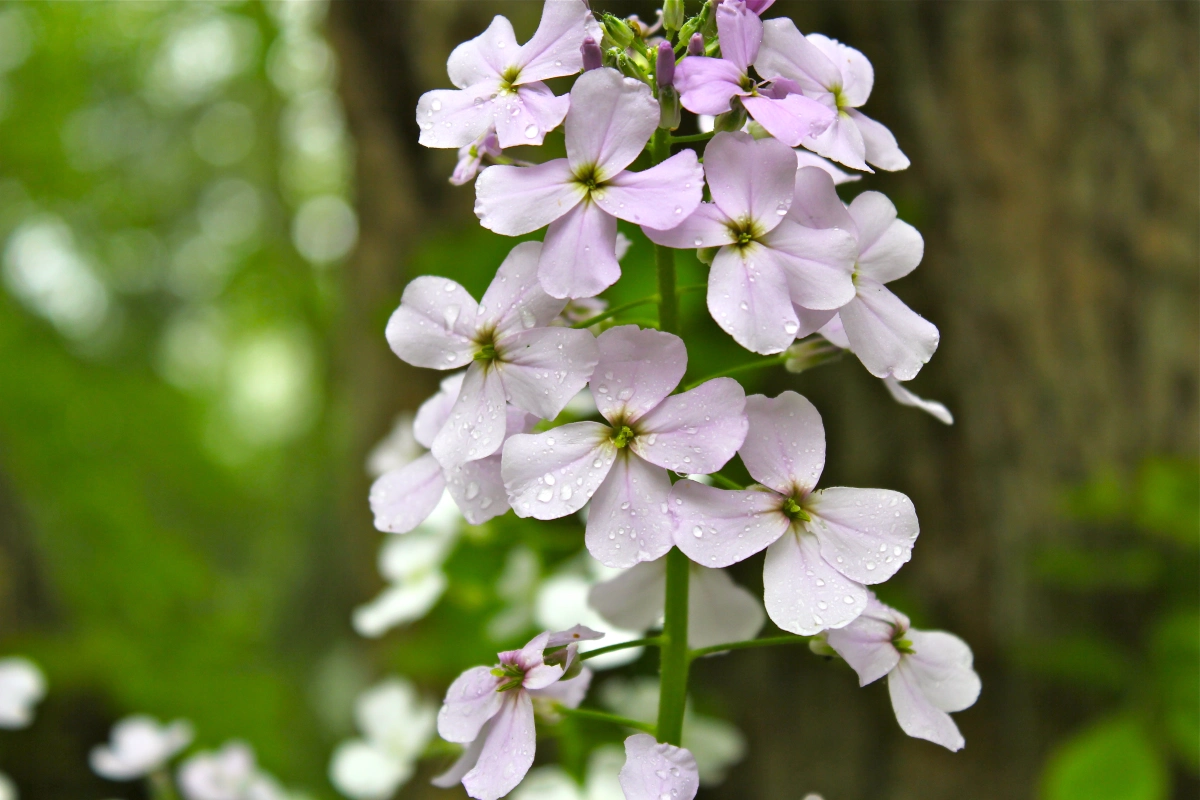Home>Gardening & Outdoor>Landscaping Ideas>When To Plant Grass Seed In Virginia


Landscaping Ideas
When To Plant Grass Seed In Virginia
Modified: February 18, 2024
Discover the best times for planting grass seed in Virginia with our expert landscaping ideas. Ensure a lush, healthy lawn with our planting tips and advice.
(Many of the links in this article redirect to a specific reviewed product. Your purchase of these products through affiliate links helps to generate commission for Storables.com, at no extra cost. Learn more)
Introduction
Welcome to the verdant world of Virginia's landscapes, where the lush greenery and vibrant flora create a picturesque backdrop for any outdoor space. Whether you're a homeowner looking to revitalize your lawn or a landscaping enthusiast eager to cultivate a thriving garden, understanding the nuances of Virginia's climate and the optimal time to plant grass seed is crucial for achieving a flourishing outdoor oasis.
In this comprehensive guide, we will delve into the intricacies of planting grass seed in Virginia, offering valuable insights into the state's climate, the best time for seeding, essential factors to consider before planting, soil preparation techniques, and tips for selecting the most suitable grass seed. You'll also discover the step-by-step process for planting grass seed and essential guidelines for nurturing newly planted grass to ensure a healthy and vibrant lawn.
Embark on this horticultural journey with us as we uncover the secrets to successful grass seed planting in Virginia, empowering you to transform your outdoor spaces into captivating havens of natural beauty. Let's dive into the vibrant world of landscaping and cultivation, where every blade of grass holds the promise of a thriving, verdant landscape.
Key Takeaways:
- Plant grass seed in Virginia during early fall or late spring for optimal growth. Consider soil composition, climate, and grass species selection for a thriving lawn.
- Prepare soil, choose the right grass seed, and care for newly planted grass to create a lush, resilient lawn in Virginia’s dynamic climate.
Read more: When To Plant Grass Seed Virginia
Understanding Virginia’s Climate
Virginia’s climate is characterized by its diverse geography, encompassing coastal plains, rolling hills, and mountainous regions. This varied topography contributes to a wide range of microclimates across the state, each with its own unique weather patterns and environmental conditions. Generally, Virginia experiences a humid subtropical climate, with hot and humid summers and mild winters. However, the mountainous areas in the western part of the state exhibit a more moderate, continental climate, with cooler temperatures and increased precipitation.
Throughout Virginia, the climate can vary significantly from the coastal areas to the inland regions, influencing the suitability of different grass species for optimal growth. Coastal areas are subject to salt spray and occasional coastal storms, while the inland regions may experience more pronounced temperature fluctuations and varying soil compositions.
The state’s climate plays a pivotal role in determining the best practices for planting and maintaining grass seed. Understanding the local climate is essential for selecting grass varieties that can thrive in Virginia’s specific conditions, ensuring the long-term success of your lawn or landscaping project.
As we navigate the intricacies of grass seed planting in Virginia, the dynamic nature of the state’s climate will guide our approach, providing invaluable insights into the most effective strategies for cultivating a vibrant and resilient lawn in this captivating region.
Best Time to Plant Grass Seed in Virginia
Timing is critical when it comes to planting grass seed in Virginia. The optimal time for seeding largely depends on the specific climatic conditions of the region, ensuring that the newly sown seeds have the best chance of germination and establishment. In Virginia, the ideal window for planting grass seed is during the early fall, typically from mid-August to mid-September. During this period, the soil retains warmth from the summer months, creating favorable conditions for seed germination and root development.
Planting grass seed in the early fall allows the young grass plants to establish sturdy root systems before the onset of winter. The moderate temperatures and adequate moisture levels during this season provide an optimal environment for the germination and early growth of the grass seed. Additionally, the reduced weed pressure in the fall minimizes competition for resources, giving the newly planted grass a competitive edge as it takes root and flourishes.
While the early fall is the prime time for seeding, it’s important to note that late spring, particularly from mid-April to mid-May, also presents a favorable window for planting grass seed in Virginia. During this period, the soil has warmed up sufficiently, and the risk of late frosts has diminished, creating conducive conditions for successful germination and establishment of grass seed.
Understanding the seasonal dynamics and temperature fluctuations in Virginia is crucial for determining the best time to plant grass seed. By aligning the seeding process with the optimal seasonal conditions, you can maximize the chances of establishing a healthy and resilient lawn that thrives in the unique climate of Virginia.
Factors to Consider Before Planting Grass Seed
Before embarking on the journey of planting grass seed in Virginia, it’s essential to consider several key factors that can significantly impact the success of your lawn establishment efforts. Understanding these factors and their implications will empower you to make informed decisions and lay the groundwork for a thriving and resilient grassy expanse.
- Soil Composition: Virginia’s diverse geography gives rise to a wide range of soil types, each with its unique composition and characteristics. Before planting grass seed, it’s crucial to assess the soil composition in your specific location. Conducting a soil test can provide valuable insights into the pH levels, nutrient content, and texture of the soil, guiding your choice of grass species and informing any necessary soil amendments.
- Microclimatic Conditions: Virginia’s varied topography contributes to diverse microclimates across the state, influencing factors such as temperature extremes, precipitation patterns, and wind exposure. Understanding the microclimatic conditions in your area can help you select grass varieties that are well-suited to the local environment, ensuring optimal growth and resilience.
- Grass Species Selection: Choosing the right grass species is paramount to the long-term success of your lawn. Consider factors such as shade tolerance, drought resistance, and maintenance requirements when selecting grass varieties. In Virginia, popular choices include cool-season grasses like Kentucky bluegrass, fescue, and ryegrass, as well as warm-season options such as zoysia and Bermuda grass.
- Water Availability: Assessing the availability of water, whether through natural rainfall or irrigation systems, is crucial for sustaining newly planted grass seed. Understanding the water requirements of your chosen grass species and factoring in local precipitation patterns will help you develop a watering regimen that promotes healthy establishment and growth.
- Existing Vegetation and Weed Control: Evaluating the presence of existing vegetation and potential weed pressure is essential before planting grass seed. Clearing the area of debris, weeds, and competing vegetation, and employing effective weed control measures, will create a favorable environment for the successful establishment of newly sown grass seed.
By carefully considering these factors and tailoring your approach to the specific conditions of your location, you can set the stage for a successful grass seed planting endeavor, nurturing a vibrant and resilient lawn that thrives in Virginia’s dynamic environment.
Preparing the Soil for Planting
Creating an optimal environment for grass seed germination and growth begins with thorough soil preparation. In Virginia, where the diverse landscape gives rise to varying soil compositions and characteristics, the process of soil preparation plays a pivotal role in establishing a healthy and robust lawn. Here are essential steps to prepare the soil for planting grass seed:
- Soil Testing: Before initiating any soil preparation activities, conducting a comprehensive soil test is crucial. A soil test provides valuable insights into the pH levels, nutrient content, and texture of the soil, guiding the application of soil amendments and the selection of appropriate grass species.
- Clearing and Leveling: Begin by clearing the designated area of any debris, rocks, and existing vegetation. Ensure that the ground is relatively level, addressing any uneven patches and contours to create a smooth and uniform surface for seeding.
- Aerating and Loosening: Aerating the soil helps alleviate compaction and promotes better air and water penetration. Utilize a core aerator to perforate the soil, allowing for improved root development and nutrient uptake. Additionally, loosening the soil through tilling or raking facilitates seed-to-soil contact, enhancing germination rates.
- Applying Soil Amendments: Based on the results of the soil test, apply any necessary soil amendments to optimize the soil conditions for grass seed establishment. This may include adjusting pH levels, replenishing essential nutrients, and improving soil structure through the addition of organic matter.
- Fertilization: Prior to seeding, apply a balanced starter fertilizer to provide essential nutrients for the initial growth of the grass seedlings. Select a fertilizer with a formulation tailored to the specific needs of newly establishing turf.
- Moistening the Soil: Ensure that the prepared soil is adequately moist but not waterlogged before seeding. Proper soil moisture is essential for promoting seed germination and early root development.
By meticulously preparing the soil according to these guidelines, you can create an optimal foundation for planting grass seed in Virginia, setting the stage for robust germination, vigorous growth, and the emergence of a lush and resilient lawn that thrives in the unique climate of the region.
The best time to plant grass seed in Virginia is in the late summer or early fall, between mid-August and mid-September. This allows the seeds to establish before the winter and gives them a head start for the following spring.
Read more: When To Plant Grass Seed In Spring Virginia
Choosing the Right Grass Seed for Virginia
When it comes to selecting the ideal grass seed for your Virginia landscape, several factors come into play, including climate, soil composition, maintenance preferences, and intended use of the lawn. By understanding the diverse options available and considering the specific requirements of your outdoor space, you can make an informed decision that paves the way for a thriving and visually appealing lawn. Here are essential considerations for choosing the right grass seed in Virginia:
- Cool-Season vs. Warm-Season Grasses: Virginia’s climate accommodates both cool-season and warm-season grasses. Cool-season grasses, such as Kentucky bluegrass, fescue, and ryegrass, thrive in the state’s moderate winters and warm summers. Warm-season options like zoysia and Bermuda grass are well-suited to the hotter regions of Virginia, exhibiting excellent heat tolerance and drought resistance.
- Shade Tolerance: If your lawn features shaded areas, selecting grass varieties with high shade tolerance is crucial. Fine fescues, for instance, are renowned for their ability to thrive in shaded environments, making them an excellent choice for lawns with tree cover or structures that cast shadows.
- Drought Resistance: Considering Virginia’s variable precipitation patterns, opting for grass species with strong drought resistance can ensure the longevity and sustainability of your lawn during dry spells. Tall fescue, known for its robust root system and resilience to drought, is a popular choice for many Virginia landscapes.
- Maintenance Requirements: Assessing your maintenance preferences and available resources can guide your selection of grass seed. Some varieties, such as Kentucky bluegrass, demand more intensive maintenance, including regular watering and mowing, while others, like fine fescues, offer lower maintenance requirements.
- Soil Compatibility: Consider the soil composition and pH levels of your lawn area when choosing grass seed. Certain grass species may thrive in acidic soils, while others prefer neutral or alkaline conditions. Matching the grass seed to the soil characteristics can optimize growth and long-term vitality.
By carefully evaluating these factors and exploring the diverse range of grass seed options, you can make an informed decision that aligns with the specific needs and characteristics of your Virginia landscape. Whether you seek a lush, manicured lawn for recreational activities or a resilient, low-maintenance turf for aesthetic appeal, the right grass seed selection is the cornerstone of a flourishing outdoor haven.
Planting Grass Seed in Virginia
As you embark on the exciting endeavor of planting grass seed in Virginia, following best practices and proven techniques is essential for establishing a vibrant and resilient lawn. The process of sowing grass seed involves careful preparation, strategic seeding methods, and meticulous attention to detail. Here’s a step-by-step guide to planting grass seed in Virginia:
- Seed Selection: Choose high-quality grass seed that aligns with the specific requirements of your lawn, considering factors such as climate adaptability, shade tolerance, and maintenance preferences. Opt for certified seed varieties to ensure superior germination rates and overall performance.
- Seed Distribution: Use a broadcast spreader or seed spreader to evenly distribute the grass seed across the prepared soil. Adjust the spreader settings according to the recommended seeding rates for the selected grass species, ensuring uniform coverage and optimal seed-to-soil contact.
- Seeding Techniques: After spreading the grass seed, lightly rake the soil to incorporate the seeds into the top layer. This promotes adequate soil contact, which is essential for successful germination. Avoid burying the seeds too deeply, as this can impede their emergence.
- Rolling and Watering: Gently roll the seeded area with a lawn roller to ensure good seed-to-soil contact and promote uniform germination. Following this, water the seeded area thoroughly but gently, using a fine mist or a gentle spray setting to prevent displacement of the seeds. Maintain consistent soil moisture to support germination and early growth.
- Overseeding and Patching: For existing lawns that require thickening or repair, overseeding or patching can rejuvenate the turf. Prepare the targeted areas by loosening the soil, spreading the grass seed, and gently incorporating it into the soil. Adequate watering and ongoing care will facilitate the integration of the new grass with the existing turf.
By following these steps and adhering to best practices for grass seed planting, you can lay the groundwork for a lush and resilient lawn that thrives in the dynamic climate of Virginia. Whether you’re establishing a new lawn or revitalizing an existing one, strategic grass seed planting techniques are instrumental in achieving a verdant and inviting outdoor space.
Caring for Newly Planted Grass Seed
After sowing the seeds of your vision for a lush, vibrant lawn, nurturing the newly planted grass seed is crucial for fostering robust growth and long-term vitality. Caring for the nascent grass involves attentive maintenance, strategic watering, and protective measures to safeguard the delicate seedlings. Here’s a comprehensive guide to caring for newly planted grass seed in Virginia:
- Watering Regimen: Maintaining consistent soil moisture is essential for supporting seed germination and early growth. Water the seeded area lightly and frequently, ensuring that the soil remains consistently moist but not waterlogged. As the grass seedlings emerge and establish, gradually transition to deeper, less frequent watering to encourage robust root development.
- Protection from Disturbance: Minimize foot traffic and avoid disturbing the seeded area during the germination and early growth stages. Implement temporary barriers or signage to prevent inadvertent trampling or disruption, allowing the delicate grass seedlings to take root undisturbed.
- Mowing Guidelines: Once the newly planted grass reaches a height of approximately 3 to 4 inches, it’s time for the inaugural mowing. Set the mower blade to a higher setting to avoid excessive stress on the young grass, and ensure that the mower blades are sharp to achieve clean cuts that promote healthy growth.
- Fertilization Strategy: As the newly planted grass matures, consider a light application of a balanced, slow-release fertilizer to provide essential nutrients for sustained growth. Choose a fertilizer formulation tailored to the specific needs of the grass species and apply it according to recommended guidelines.
- Weed Management: Vigilant weed control is crucial for safeguarding the developing grass seedlings from competition and invasive species. Employ targeted weed control measures, such as hand removal or selective herbicide application, to prevent weeds from encroaching on the emerging turf.
- Monitoring and Adjustment: Regularly monitor the progress of the newly planted grass, assessing its growth, color, and overall health. Adjust your maintenance practices, watering frequency, and care regimen based on the evolving needs of the developing lawn, ensuring that it receives tailored attention as it matures.
By implementing these comprehensive care guidelines, you can nurture the newly planted grass seed into a resilient and verdant lawn that thrives in the unique climate of Virginia. From vigilant watering to strategic maintenance, your dedicated care will lay the foundation for a captivating outdoor oasis that beckons with lush, emerald allure.
Conclusion
As we conclude our journey through the intricacies of planting and nurturing grass seed in Virginia, we emerge with a profound appreciation for the art and science of cultivating vibrant and resilient landscapes. Virginia’s dynamic climate, diverse topography, and unique microclimates create a rich tapestry of opportunities and challenges for lawn establishment and maintenance. By understanding the seasonal nuances, soil characteristics, and grass seed selection criteria specific to the region, you can embark on a horticultural odyssey that culminates in the creation of captivating outdoor spaces that beckon with natural splendor.
From the rolling hills to the coastal plains, Virginia’s landscapes offer a canvas for crafting verdant havens that inspire and rejuvenate. By aligning the timing of grass seed planting with the optimal seasonal windows, carefully preparing the soil, selecting the right grass seed varieties, and nurturing the newly sown turf with attentive care, you can cultivate a thriving and visually captivating lawn that harmonizes with the natural beauty of the region.
As you embark on your own landscaping adventures in Virginia, may the knowledge and insights shared in this guide serve as a compass, guiding you through the intricacies of lawn establishment and care. Whether you’re a homeowner seeking to transform your outdoor space or a landscaping enthusiast eager to unlock the full potential of Virginia’s natural splendor, the journey of planting and nurturing grass seed is a testament to the enduring allure of horticulture and the transformative power of greenery.
As each blade of grass takes root and flourishes, it weaves a narrative of resilience and vitality, embodying the timeless allure of nature’s embrace. May your landscapes thrive, your outdoor spaces bloom, and your connection to Virginia’s natural wonders deepen as you embark on the enriching journey of grass seed planting and cultivation.
Frequently Asked Questions about When To Plant Grass Seed In Virginia
Was this page helpful?
At Storables.com, we guarantee accurate and reliable information. Our content, validated by Expert Board Contributors, is crafted following stringent Editorial Policies. We're committed to providing you with well-researched, expert-backed insights for all your informational needs.















0 thoughts on “When To Plant Grass Seed In Virginia”